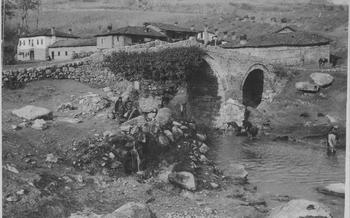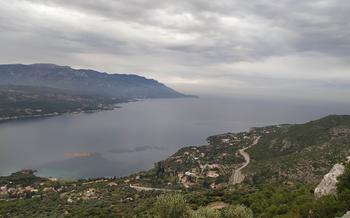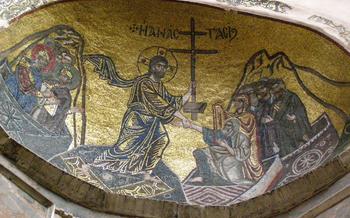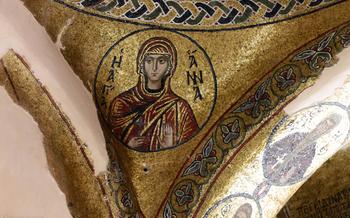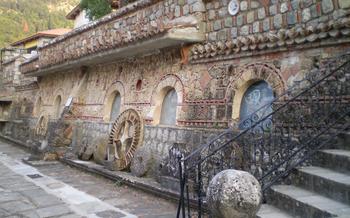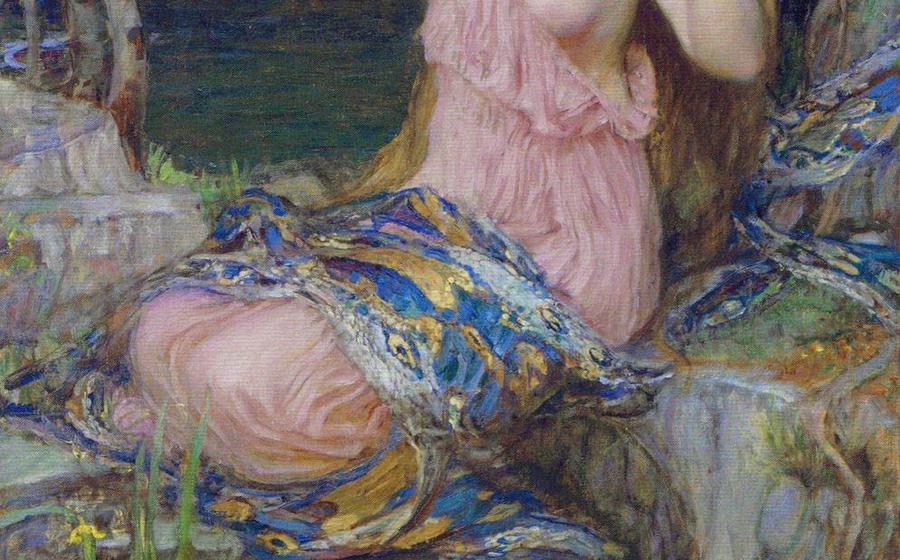
Roditsa Monastery
- Roditsa Monastery: A Historic Gem
- Location: A Secluded Retreat
- Entrance and Fees
- Exploring the Monastery Grounds
- Beautiful Mosaics and Frescoes
- The Church of the Dormition of the Theotokos
- The Crypt: A Place of Reverence
- Monastic Life: A Glimpse into the Past
- The Museum: A Treasure Trove of History
- Festivals and Events: A Time to Celebrate
- Pilgrimage Site: A Journey of Faith
- Nature's Beauty: A Serene Setting
- Local Cuisine: A Taste of Tradition
- Accommodation Options: A Place to Rest
- Insider Tip: Hidden Gems
Roditsa Monastery: A Historic Gem
The Roditsa Monastery, nestled amidst the enchanting landscapes of Lamia in Greece, stands as a testament to centuries of faith, history, and architectural brilliance. Its origins can be traced back to the 11th century, when it was founded by the Byzantine emperor Constantine IX Monomachos. Over the centuries, it has undergone several renovations and expansions, blending various architectural influences into its majestic structure.
The monastery's religious significance is profound, as it is dedicated to the Dormition of the Theotokos, the Virgin Mary. It serves as a pilgrimage site for Orthodox Christians from around the world, who come to pay homage and seek spiritual guidance. Today, the monastery continues to function as a vibrant religious community, with a small number of monks residing within its walls, preserving the traditions and rituals that have been passed down through generations.
Location: A Secluded Retreat
The Roditsa Monastery is nestled amidst the enchanting scenery of the Othrys Mountains, in the heart of Central Greece. It is situated in the village of Roditsa, which is approximately 20 kilometers northeast of the city of Lamia. The monastery can be reached by car, following the scenic mountain roads that wind through the lush forests and picturesque villages. The journey offers breathtaking views of the surrounding landscapes, making it an adventure in itself.
For those without their own transportation, public buses are available from Lamia to Roditsa. The trip takes about 45 minutes, providing an opportunity to witness the local way of life and admire the passing countryside. Alternatively, taxis can be hired from Lamia or nearby towns for a more direct and comfortable journey.
The monastery's secluded location contributes to its tranquil atmosphere, making it an ideal place for those seeking a retreat from the bustling city life. Immersed in nature's embrace, visitors can find solace and serenity within the monastery's sacred grounds.
Entrance and Fees
Cost of admission
- Entrance to the Roditsa Monastery is free of charge for all visitors.
- However, donations are welcome and greatly appreciated, as they help maintain and preserve the monastery's grounds and buildings.
Hours of operation
- The monastery is open to the public daily from sunrise to sunset.
- Visitors are advised to plan their visit during daylight hours, as the monastery is not illuminated at night.
Guided tours availability
- Guided tours of the monastery are not currently available.
- However, visitors can explore the grounds and buildings at their own pace, using the information provided on signage and brochures.
Tips for budget travelers
- The monastery is an excellent destination for budget travelers, as there are no admission fees or guided tour costs.
- Visitors can save money by bringing their own food and drinks, as there are no restaurants or cafes on the premises.
- It is also advisable to visit during the off-season (November to March) when there are fewer crowds and accommodation prices are lower.
Exploring the Monastery Grounds
The Roditsa Monastery complex is a treasure trove of architectural wonders and hidden gems. As you step through the gates, you'll be greeted by a serene courtyard, surrounded by the monastery's iconic buildings. Take a moment to admire the intricate details of the facades, each adorned with unique carvings and frescoes.
At the center of the courtyard stands the majestic Church of the Dormition of the Theotokos, with its grand dome and elaborate exterior. But don't limit your exploration to just the main church. Venture into the smaller chapels, each dedicated to a different saint, and discover the beautiful mosaics and frescoes that adorn their walls.
Be sure to explore the monastery's cloisters, where you can wander through peaceful arcades and admire the serene views of the surrounding countryside. Don't miss the refectory, where the monks once gathered for meals, and the library, which houses a collection of ancient manuscripts and religious texts.
As you explore the monastery grounds, keep an eye out for hidden corners and secret passages. Climb the bell tower for panoramic views of the surrounding landscape, or descend into the crypt to discover the relics and artifacts that lie beneath the monastery. With every step, you'll uncover another layer of history and spirituality that makes this sacred place so special.
Beautiful Mosaics and Frescoes
The Roditsa Monastery is renowned for its exquisite mosaics and frescoes that adorn the interior walls of the church and other buildings. These artworks, created by skilled craftsmen over centuries, hold immense artistic and religious significance.
The mosaics, composed of tiny colored tiles, depict biblical scenes, saints, and intricate geometric patterns. They shimmer with vibrant hues and create a sense of awe and wonder. The frescoes, painted directly onto the walls, showcase religious narratives, portraits, and symbolic representations. The vibrant colors and expressive brushstrokes bring the stories to life, offering a glimpse into the rich history and beliefs of the monastery.
The symbolism embedded within the mosaics and frescoes invites visitors to contemplate the deeper meanings and messages conveyed by the artists. They serve as a visual testament to the faith and devotion of the monks who dedicated their lives to preserving and propagating the Christian tradition.
The preservation of these artworks is a testament to the enduring legacy of the monastery. Restoration efforts have been undertaken to protect and conserve the mosaics and frescoes, ensuring that they continue to inspire and captivate visitors for generations to come.
The Church of the Dormition of the Theotokos
At the heart of the Roditsa Monastery lies the magnificent Church of the Dormition of the Theotokos, an architectural masterpiece that exudes both grandeur and spirituality. Constructed in the 13th century, the church boasts an impressive dome that dominates the skyline, symbolizing its importance as a place of worship and pilgrimage.
The interior of the church is adorned with intricate frescoes and mosaics that depict scenes from the life of Christ, the Virgin Mary, and various saints. These artworks are not only visually stunning but also hold deep religious and symbolic meaning. The vibrant colors and expressive brushstrokes captivate visitors, transporting them back in time to the era when these masterpieces were created.
The church also features an ornate iconostasis, a partition that separates the sanctuary from the nave. The iconostasis is adorned with a collection of icons, each depicting a different saint or religious figure. These icons are revered by Orthodox Christians and are often the focus of prayers and devotions.
Throughout the year, the Church of the Dormition of the Theotokos hosts various religious ceremonies and services. These ceremonies, which include traditional prayers, chanting, and incense burning, provide visitors with an opportunity to witness the vibrant spiritual life of the monastery and to experience the deep faith of the Orthodox Christian community.
One of the most captivating stories associated with the church is that of a miraculous icon of the Virgin Mary. According to legend, the icon was discovered by a monk in a nearby cave and was brought to the monastery. Believers claim that the icon has performed numerous miracles and has become a symbol of hope and divine protection for the faithful.
The Crypt: A Place of Reverence
Beneath the Church of the Dormition of the Theotokos lies the crypt, a sacred and evocative chamber that holds profound religious significance for Orthodox Christians. This hallowed space serves as a repository for the relics and artifacts of saints and martyrs, each item imbued with a unique story of faith and devotion. The atmosphere within the crypt is one of hushed reverence, a palpable sense of spirituality that envelops visitors as they pay homage to these sacred remains.
Among the treasured relics on display are the bones of saints, fragments of clothing, and personal belongings that have been carefully preserved and venerated for centuries. These remnants of holy lives serve as a tangible connection to the past, allowing pilgrims and visitors to feel a deeper connection to the individuals who dedicated their lives to serving God.
The crypt also houses a collection of religious artifacts, including intricate gold and silver reliquaries, elaborately decorated icons, and ancient manuscripts. These artifacts provide a glimpse into the rich history and traditions of the Orthodox Church, shedding light on the beliefs and practices that have shaped the faith over the centuries.
Devotees often visit the crypt to seek spiritual guidance, pray for miracles, or simply to experience the profound peace that permeates the air. Stories abound of miraculous healings, answered prayers, and other divine interventions that have occurred within these sacred walls. For those seeking a deeper connection to their faith, the crypt offers a sanctuary for contemplation and reflection, a place where the presence of the divine can be felt in a tangible way.
Monastic Life: A Glimpse into the Past
The Roditsa Monastery is not just a historical and architectural marvel; it is also a living testament to the enduring traditions of monastic life. Step into the monastery, and you will be transported back in time, witnessing the daily rhythm of the monks' existence.
The monks follow a strict routine that begins before sunrise and continues late into the night. They gather for prayers several times a day, devote themselves to studying religious texts, and engage in manual labor to sustain the monastery. Self-sufficiency is a cornerstone of monastic life, and the monks tend to their gardens, raise livestock, and produce their own food and wine.
Beyond their religious duties, the monks play a vital role in the local community. They offer spiritual guidance, support those in need, and preserve traditional crafts and customs. They are also custodians of the monastery's rich history and cultural heritage, passing down stories and traditions from generation to generation.
Despite the challenges of modern life, the monks of Roditsa Monastery remain steadfast in their devotion. They face financial difficulties, dwindling numbers, and the distractions of the outside world, but they continue to uphold their centuries-old way of life. Their unwavering commitment to their faith and their community serves as an inspiration to all who visit this sacred place.
The Museum: A Treasure Trove of History
The monastery of Roditsa is home to a fascinating museum that offers a glimpse into its rich history and cultural significance. Within its walls, visitors can discover an array of captivating exhibits, including historical artifacts such as ancient manuscripts, religious relics, and ornate vestments. These remnants of the past stand as a testament to the monastery's enduring role in the religious and cultural fabric of Greece.
The museum also boasts a collection of intriguing documents, shedding light on the daily lives and spiritual practices of the monks who have called Roditsa their home over the centuries. Through interactive displays, visitors can delve deeper into the unique traditions and rituals that have shaped the monastery's identity. Whether you're a history buff, a lover of art, or simply curious about the past, the museum at Roditsa Monastery is a treasure trove of knowledge and inspiration.
Festivals and Events: A Time to Celebrate
The Roditsa Monastery is not only a place of religious significance but also a venue for vibrant festivals and events throughout the year. These celebrations offer a glimpse into the rich cultural heritage of the region and provide opportunities for visitors to immerse themselves in the local traditions.
The most prominent festival held at the monastery is the annual celebration of the Dormition of the Theotokos, which takes place on August 15th. This religious festival attracts thousands of pilgrims and visitors who come to pay homage to the Virgin Mary and participate in the festivities. The day is marked by solemn religious ceremonies, processions, and the distribution of blessed bread and wine.
In addition to religious festivals, the monastery also hosts various cultural events and performances. These events showcase the talents of local artists and provide a platform for the preservation and promotion of traditional Greek culture. Visitors can enjoy concerts, dance performances, art exhibitions, and theatrical productions that celebrate the region's rich heritage.
Participating in these festivals and events is a fantastic way to experience the lively atmosphere of the monastery and connect with the local community. Visitors can immerse themselves in the vibrant traditions, savor delicious local cuisine, and take part in the joyful celebrations that bring the community together.
Pilgrimage Site: A Journey of Faith
The Roditsa Monastery holds immense religious significance as a pilgrimage site for Orthodox Christians. Thousands of pilgrims flock to the monastery throughout the year, seeking spiritual enlightenment and blessings. The monastery's reputation for miracles and its association with Saint Athanasios draw devotees from near and far.
Pilgrims often embark on a journey to the monastery, following traditional pilgrimage routes that have been used for centuries. Along the way, they engage in prayer, reflection, and acts of devotion. The monastery provides a sanctuary for pilgrims to connect with their faith and seek spiritual guidance.
During religious festivals, the monastery becomes a hive of activity, with pilgrims gathering to celebrate and participate in special ceremonies. These festivals are a testament to the deep-rooted faith and traditions of the Orthodox Christian community.
For believers, a pilgrimage to the Roditsa Monastery is a transformative experience, offering a chance to deepen their connection with God, seek blessings, and find spiritual renewal.
Nature's Beauty: A Serene Setting
The Roditsa Monastery is nestled amidst a breathtaking natural landscape that offers tranquility and serenity to visitors. From the monastery's vantage point, visitors can revel in panoramic views of the surrounding mountains and valleys, a feast for the eyes that instills a sense of awe and wonder. The unspoiled natural environment invites exploration, with a network of hiking trails that wind through lush forests and lead to hidden waterfalls and secluded clearings. These trails offer a chance to immerse oneself in the beauty of nature and find moments of solitude and reflection.
For those seeking a leisurely experience, there are designated picnic spots where one can spread a blanket, unpack a basket of local delicacies, and savor a meal while enjoying the fresh air and stunning surroundings. Whether it's embarking on an invigorating hike or simply relaxing in nature's embrace, the Roditsa Monastery provides a sanctuary for those who seek solace and rejuvenation in the heart of Greece's natural wonders.
Local Cuisine: A Taste of Tradition
When visiting the Roditsa Monastery, travelers have the opportunity to indulge in the delicious traditional Greek cuisine of the region. Local specialties such as moussaka, spanakopita, and gemista are a must-try for food enthusiasts. Visitors can savor these delectable dishes at nearby restaurants, which offer a warm and inviting atmosphere. For those interested in learning more about Greek culinary traditions, cooking classes and workshops are available, providing a hands-on experience in creating authentic Greek dishes. Whether it's a simple meal or a culinary adventure, the local cuisine surrounding the Roditsa Monastery offers a unique and unforgettable taste of Greece.
Accommodation Options: A Place to Rest
When planning your visit to the Roditsa Monastery, you'll need to consider your accommodation options. There are several hotels and guesthouses in the surrounding area that offer a range of choices for travelers. For a more immersive experience, you can opt to stay at one of the monastery's guesthouses, which are available for pilgrims and visitors seeking a spiritual retreat.
If you're on a tight budget, there are a few hostels and budget hotels within a short distance from the monastery. It's advisable to book your accommodation in advance, especially during the peak tourist season, to avoid any last-minute surprises.
For those seeking a unique and authentic experience, consider staying in one of the traditional Greek villages nearby. This will give you a chance to immerse yourself in the local culture and enjoy the hospitality of the Greek people.
For those who prefer a more luxurious experience, there are several upscale hotels and resorts located in the region. These offer a range of amenities and services to ensure a comfortable and memorable stay.
Insider Tip: Hidden Gems
Beyond the main attractions of the Roditsa Monastery, there are several hidden gems waiting to be discovered. For those who venture off the beaten path, there are secret gardens, secluded chapels, and breathtaking viewpoints that offer a unique perspective of the monastery and its surroundings. Ask a local monk or guide about these hidden treasures, and they may reveal secret passages or forgotten stories that add depth to your visit.
One such hidden gem is a small chapel located in a remote corner of the monastery grounds. Dedicated to a lesser-known saint, this chapel exudes an aura of tranquility and devotion. Its walls are adorned with faded frescoes that tell stories of faith and miracles. Another hidden gem is a natural spring that is said to have healing properties. Located a short walk from the monastery, this spring is a popular spot for pilgrims and locals seeking spiritual and physical rejuvenation.
To truly immerse yourself in the beauty and serenity of the Roditsa Monastery, take some time to explore its hidden corners. Whether you stumble upon a secret garden, discover a forgotten chapel, or witness a special event, these hidden gems will leave a lasting impression and make your visit to this historic monastery truly unforgettable.


